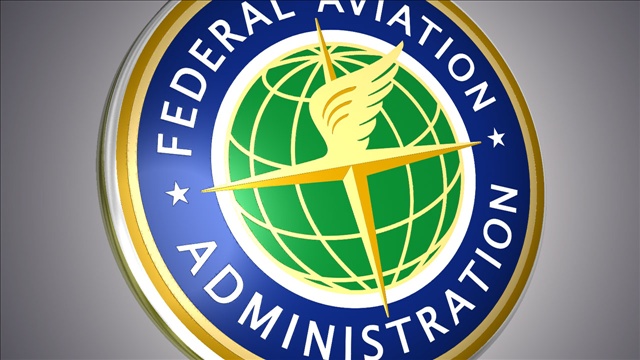Our top tips to picking the best Compliance Solution for the aviation sector. This support structure is a proven approach that will keep the authorities happy. Should they knock on your door…
If you work in an Aviation Quality department, compliance is a word you hear in your sleep. And lack of it will give you nightmares.
Either way, compliance is something you can never really study and must match your experience and knowledge to the regulatory framework in your region or country.

Compliance Certification Issue
But you know us! We think we know everything. And so must always have a compliance solution to every problem. And we think we do. It’s in the Outback. Australia. Down under. As they say.
Wait, what?
External Regulations
That’s right. What we’d like to do is give you the chance to turn from poacher to gamekeeper. What we would like to do is put you in the shoes of a Regulatory Agent (i.e. FAA Inspector). To tell you what they are thinking and how they are approaching their implementation of the regulations. For example, when they come for a compliance audit.
Caveat – This is backed up by a report linked below in the article and is from the Australian Department of Defense (Defense Aviation Safety Program) and concerns Aviation technical regulations.
Compliance Resources
Authorities. Yours. Mine. The FAA. EASA. The DGAC or Australian CASA. Every country has one. And regulated entities such as Airlines, Airports and MROs are handed a book of regulations to live by. Guidance documents of instructions from on-high that are used as guidelines to implement aviation regulations in your organization. But the compliance solution is always down to you.
And your Authority employs Agents (or Officers in the EU) to ensure you are in a status of safety compliance. They audit your performance on issues such as certification, production, operation, safety (or Security) and punish you if you fail to comply.
Standards Bodies
They use two elements.

Number 1 - The Regulations
The rules that you are expected to follow. These are available to download or are provided by your authority and are mostly legal-speak or broad regulatory language concocted by politicians who don’t know the Aviation Industry.
Number 2 - Safety Compliance Guidance
Mostly AMC’s (Acceptable Means of Compliance) which suggest ways for you to put these rules into action. A helping hand to decipher the regulations in practical ways. ADs (Airworthiness directives) for example, work in a comparable way. When a real-world technical problem surfaces, the resultant AD contains practical ways to fix that problem. Proposed as AMCs sourced from the industry experts. If only every aviation sector was as good with compliance solutions.
Compliance Tools
After that Agents or officers spend their time knocking on your door, checking to see if you are indeed complying with the regulations. And how you are doing it. Causing you a lot of headaches if you are not.
So what methodology are they using? How are they approaching the rules in such a way that they can approve your AMCs as being satisfactory?
In truth each authority is different. How they instruct their inspection staff is not published. But the Australian DOD has released a paper that suggests the best way to do it. And we agree. We are also happy to share it because, well, we know someone (wink wink) who’s an Inspection Officer and this document really captures what it is they do. And how they think.
So here are the Seven things an officer uses when he assails your office with the compliance controls rulebook in hand. And this is kept broad for a reason.

Hazard-based Approach
You cannot implement every single regulation in the letter of the law. It’s Impossible. And you are not expected to. What you are expected to do, however, is know the difference between what is critical to safety and what is “nice to have” from the compliance standards.
Your approach to safety had better be based on the hazards and not on non-safety things. Make sure you have your priorities right.
Outcome based Compliance Solution
Your Aviation regulator isn’t a monster. Nor are they trying to make your life impossible. But they would like your compliance solution efforts to focus on the outcome of a safety-based assessment. To that end, they will allow you a lot of leeway in the AMCs to deliver the right outcome. If you feel you have something good that they are not aware of – and you feel they should be – feel free to tell them. They should listen. ADs have similar flexibilities. If you are smart and can solve an AD in a better way for your organization. Propose it.
If you are a Compliance Solution Manager, then you have an important job to do. And that job should involve simplicity. You should take any regulation that could be misinterpreted, or tricky, or even bananas, and make it simple.
Your staff and management will thank you for it. As we said, regulators are forced to use language that is not easy to read or interpret, much less enact. So, you must do it for your organization so that those that come after will know what you mean.
Compliance Proofs (and self-assessment)
Compliance Proofs are simple lists. An excel sheet or a .docx file. They list the requirements clearly in a file alongside how you intend to comply with them. If it has metrics, it is all the better. The beauty of these documents is that the AMC is clearly stated and can be signed off by management. Or better still the authority. They are trying to do this themselves and they love it when you do their job for them.
Sufficient Prescription
Sometimes the AMC is too broad. “Ensure fuel system is testable” or “Stop prohibited articles entering the Security Restricted Area”. That’s not a box-tick right there. You are going to need to sub-paragraph those ones. And other regulations.
Just make sure you are “prescribing” clearly and appropriately to the smaller chunks of compliance. But when you have solved the sub-issues, the larger issue is resolved.
When you create the Proofs and the Audits in your compliance offerings, you need to add something else. Something for those who will come after you. Those who didn’t engage with the regulations as you did, but who someday (or suddenly) is thrust into that breach.
Your staff will really appreciate an explanation of how you approached compliance. For example, if an AMC looks like it could use some “explanation runway”, then don’t be afraid to write that explanation. How you arrived at, or solved, that compliance solution. It’s good practice and your name will be revered. And who doesn’t want that?

Use Safety Indicators
We hated KPI’s. But we had to accept them. Because these compliance resources are what the officer uses. Increasingly, especially in the EASA environment, we are seeing authorities request KPIs. And for them to be up front and center in the manuals.
Why? Because it makes their job easier. They want evidence. And if they cannot see evidence that you are controlling safety or improving security by measurement, then they presume you are not doing it at all.
Risk-based Oversight
Like hazard-based in point one, the Authority knows you have limited resources and wants you to use them wisely. To oversee the high-risk parts of your operation. If you assess your operation using a risk-based method, then your oversight of the operation must also be risk-based.
If you are discovered to be non-compliant, then this is not good. But it’s not fatal. At least not yet. Regulatory officers have leeway to deal with you. They use a series of escalating actions to elicit the AMCs from you. In other words, they threaten you in ever-increasing ways, to make sure you deal with the problem.
Now if you live your life this way, it will not end well. It shows that you are not competent in managing compliance and will ensure the spotlight of shame is pointed directly at you. And the officer is joined at your door by his colleagues from different departments. The regulators are your friends if you are competent. Not so friendly if you ignore them.
Genuine Engagement
Following neatly from point nine is engagement. Do not be afraid to engage with your local neighborhood Aviation Regulatory body. They are experts in the field. They have enormous resources, knowledge, and experience. And they are paid by the state to both serve and regulate. And what they love, and I mean love, is when you show them where you are struggling.
Because their instinct is to help. To use their experience and skill as Yokoten to help others. We should all work in a learning manner; everyone should learn when problems are solved.
Compliance also has a secret weapon. It forces you to look at the way you work daily. Which you should already be doing (otherwise we have no idea what you’re doing!) And when you do compliance correctly it unveils ways you can improve processes or save money.
Some folks think compliance department or quality department is a hassle. It’s not. It’s the lifeblood of your business.

